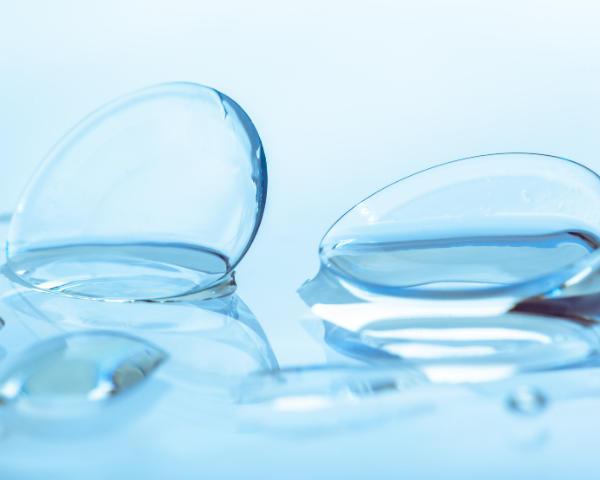What To Know Before Ordering Contact Lenses
Do you need prescription for contact lenses? | Contact lenses vs glasses | Contact lens prescription | How to read a contact lens prescription | How long do contact lens prescriptions last?

Do you need a prescription for contact lenses?
The purchase of all types of contact lenses requires a valid contact lens prescription – which can’t be the same of your glasses prescription – written by a qualified eye care practitioner. This is true even for plano lenses with no vision correction purposes, colored contact lenses or special-effect lenses that are worn for cosmetic purposes only.
Your eye care practitioner can only write your contact lens prescription after a thorough contact lens eye exam and fitting.
Contact lenses vs glasses
There are a number of differences between glasses and contact lens prescriptions due to the differing nature of their vision correction. These differences range from the distance which they sit from your eye and the way in which they are regulated by official medical bodies, to the way they are designed for your optical needs.
You may notice that the values of your glasses prescription differ from those of your contact lens prescription. Don’t worry, your optician didn’t make a mistake. This difference is completely normal, and is due to that fact that glasses are worn about 12mm away from the surface of the eye, whereas contacts sit directly on the eye’s surface.
When a glasses prescription is decided after the eye exam, a mathematical calculation is then used to calculate the alterations that need to be made in order to create the correct equivalent contact lens prescription – also known as CL Rx.
DID YOU KNOW?
The main reason for the difference in prescriptions between contact lenses and glasses is the distance at which they sit away from your eyes.
Contact lens prescription
By the time contact lenses are ready to be fitted to your eyes they have gone through a number of additional criteria than those that are required for glasses. This is due to the fact that the Federal Drugs Agency (FDA) lists contact lenses as a medical device and so they are regulated differently to glasses.
Namely, contact lenses sit directly on the eye’s surface, and so there is a greater risk of developing infections/ulcers or other complications that are not present with eyeglasses.
Finally, when fitting contact lenses the curvature of the cornea, the transparent outer covering of the eye, upon which they sit must be taken into account. No two pairs of eyes are exactly the same.
The measurement of this curvature must be taken in conjunction with its diameter in order to ascertain the best match between the size and shape of your eyes and the size of contact lenses they will require.
How to read a contact lens prescription
Eye: OS (oculus sinister) refers to the left eye and OD (oculus dextrus) refers to the right eye. If you see OU, which is less common, this is referring to both eyes.
BC: Stands for Base Curve and relates to the curvature of the contact lens. The measurement usually stands between 8 and 10.
DIA: Stands for Diameter, and refers to the diameter of the contact lenses. This usually ranges from between 13 and 15 mm.
SPH: aka Power/PWR is the corrective element of the contact lenses. A negative number (e.g. -1.75) indicates myopia (nearsightedness), while a positive one (e.g. +2.25) indicates hyperopia (farsightedness). If you see PL it stands for plano, meaning that no correction is required.
CYL: Cylinder, is the level of astigmatism present, if you have any, and is measured in diopters.
AX: Axis, measured in degrees, refers to the placement of the lens in order to relieve the problem of astigmatism.
ADD: For bifocal contact lenses, this number indicates the degree of magnification to certain parts of each lens.
Color: Whether the lenses are tinted or not.
Brand: The optometrist or ophthalmologist will select a specific brand, or model within a brand, of lenses that will best match your optical requirements.
How long do contact lens prescriptions last?
Always be aware that contact lens prescription lasts only one or two years, and after this time has passed, it is no longer accepted as valid. As a result, when your contact lens prescription expires, you won’t be able to buy more lenses until your eye care practitioner update your contact lens prescription.
That’s why a new eye exam must be made at the point of expiration in order to maintain optimum eye health and comfort.








































